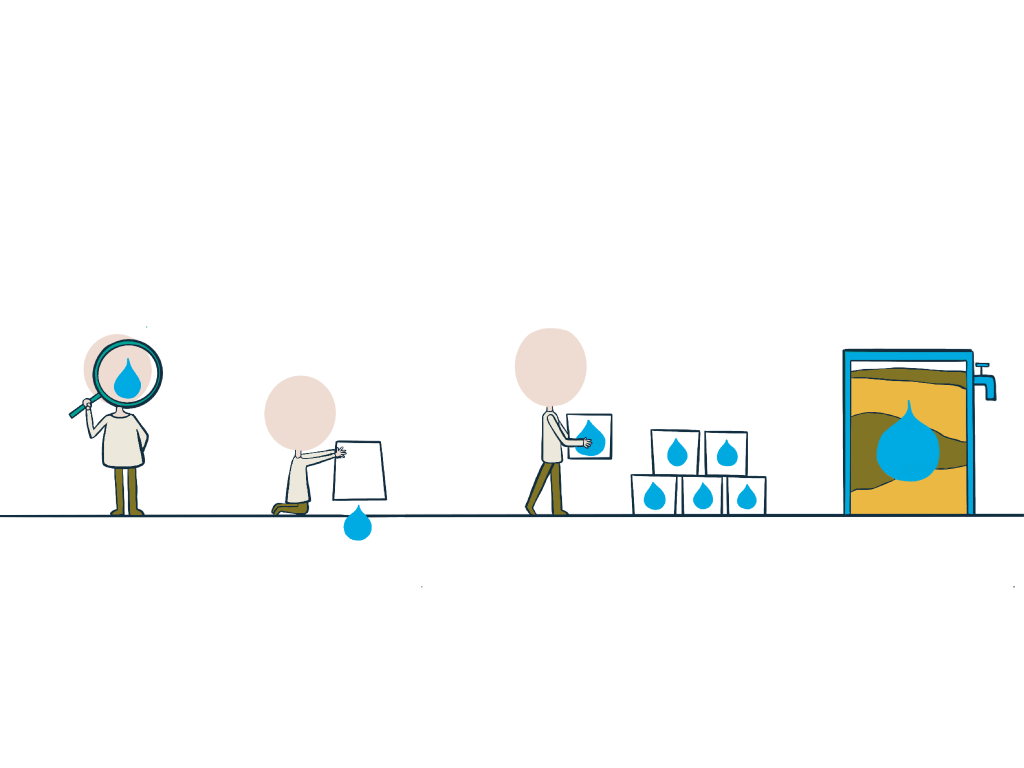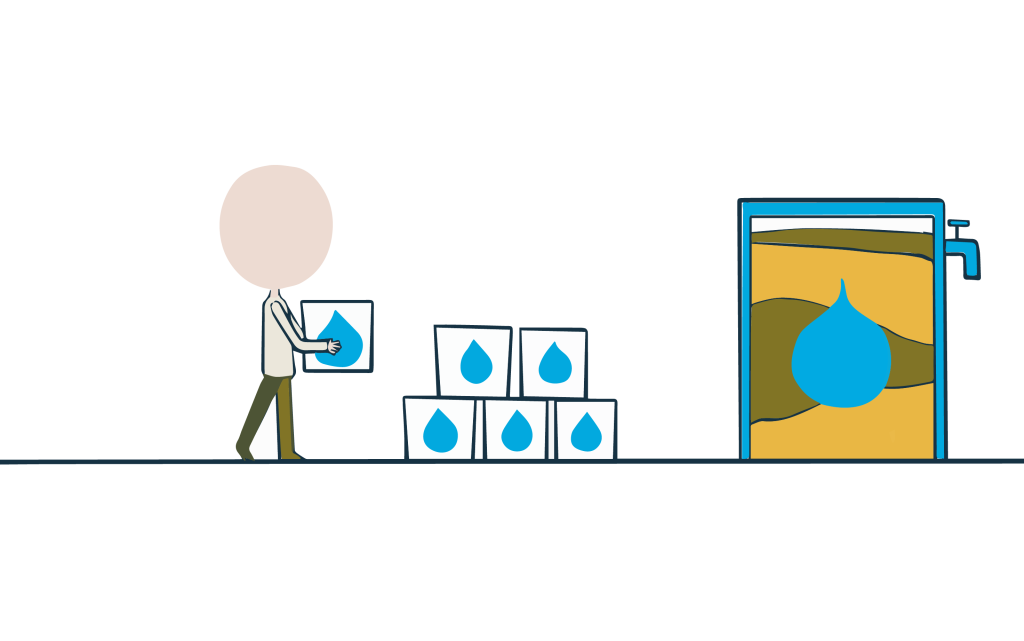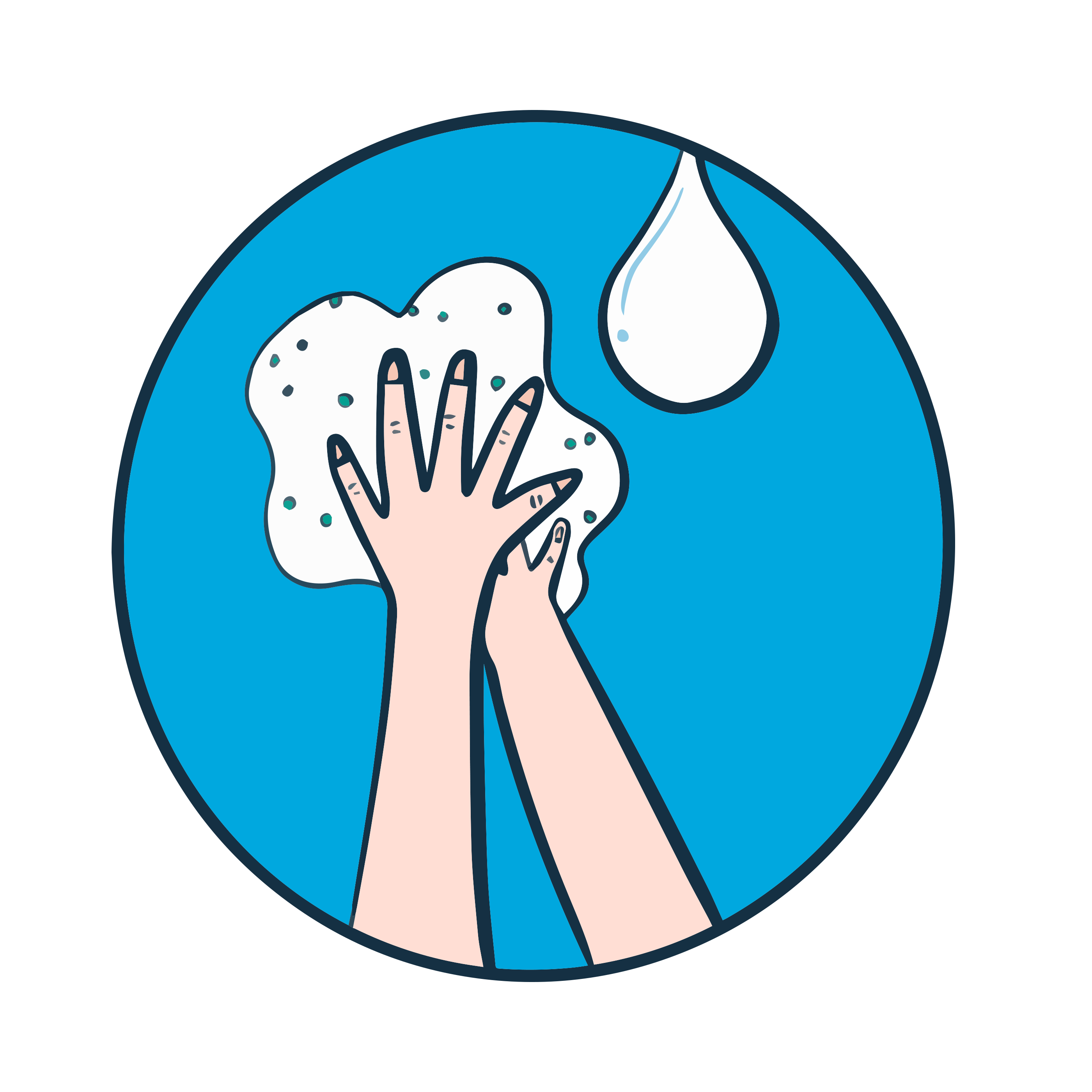Solutions
The water crisis problem varies greatly from one country to another.
We are dedicated to tackle the water problem by
taking local conditions such as geography, population, effectiveness
and sustainability into account when coming up with a solution.
From constructing a simple bio-sand filter to a more complicated water system,
we work with local partners to make sure that we are funding the most appropriate solution for each community.
水問題緩解方案
每個國家及地域的水問題都不太一樣。
我們會因應水源位置、
地理環境、人口、效率及持續性
來衡量如何緩解水問題。
由簡單的砂漏濾水裝置到更複雜的供水系統,
我們致力爲每個社區提供
最合適的方案讓捐款達其最佳效益。
Water crisis can mainly be divided into two types: water scarcity and water pollution.
From finding a solution to protecting, storing, and purifying water sources, we take actions step by step to bring people in need closer to clean water. Moreover, the quality of water and sanitation practices has an inseparable relationship with each
other, so in order to make our
projects more sustainable, we
focus on solving sanitation
problems as well.
水危機大致分爲可用水的匱乏及水體污染兩大類。
我們從這兩方面入手,制定出解決方案。由尋找水源、保護、儲存到淨化,一步一步解決水危機,縮窄人民與潔淨水的距離。而水資源的污染與衛生習關有著不可分割的關係,爲使項目更具持續性,我們亦著力解決衛生問題。

水危機大致分爲可用水的匱乏及水體污染兩大類。

我們從這兩方面入手,制定出解決方案。由尋找水源、保護、儲存到淨化,一步一步解決水危機,縮窄人民與潔淨水的距離。而水資源的污染與衛生習關有著不可分割的關係,爲使項目更具持續性,我們亦著力解決衛生問題。


Hand Dug Well
Water Supply/ Water Storage

Machine Dug Well
Water Supply/ Water Storage

Community Pond
Water Supply/ Water Storage

Water Dam
Water Supply/ Water Storage

Gravity Flow System
Water Supply/ Water Storage

Bio-sand Filter
clean Water

Water Purifier
clean Water

Toilet
Sanitation

Wash Basin
Sanitation

WAter, Sanitation and Hygiene Program (W.A.S.H.)
Sanitation


Hand Dug Well
Water Supply/ Water Storage
A pipeline is manually drilled down for 20-25 meters to reach the groundwater source. Manual drilling requires huge amount of manpower, but that brings sustainable job opportunities to the local community.
Project: Hand water pumps

Machine Dug Well
Water Supply/ Water Storage
With machine drilling, we can reach water sources under 40-150 meters or more. It saves manpower and time. However, the cost and the maintenance of the machine is relatively high. It is suitable for hard soils with large rocks layer.
Project: Community Water Wells

Community Pond
Water Supply/ Water Storage
In places where the underground water source is deep or the ground is hard, it is not cost-effective to use the machine to drill the water source. We will build water storage tanks for villages and install fences and pumping platforms to facilitate the villagers to obtain water.
Project: Community Ponds

Water Dam
Water Supply/ Water Storage
Due to the height of the terrain, the rainwater always flows to the low-lying areas, causing floods, but only few water gather at the higher areas. A dam is a barrier built on a stream or estuary. In addition to prevent flooding, it can also gather river water, collect water on the embankment, and submerge the valley to form a reservoir to solve the problem of rainwater loss.
Project: Water Dam

Water Supply System
Water Supply/ Water Storage
Mountain springs, rivers, lakes, these water sources can 7-10 kilometers away from the places where villagers live. We begin with protecting the water sources, doing simple filtration and storage, and then laying water pipes from the source to the villages and building them in the villages. Taps or household taps are shared, so villagers don’t have to travel long distances to get water.
Project: Gravity Flow System and Water Well Tower

Bio-sand Filter
clean Water
In many rural areas, there is no electricity supply at all. In order to make the project more sustainable, we use natural sand and gravel as raw materials, and install water filters for farmers. The water filters can isolate 99% of bacteria and viruses, and the operation and maintenance are simple and easy for villagers to accept.
Project: Household Bio-sand Filters and School BioSand Filters

Water Purifier
clean Water
In places with power supply, larger-scale water purification devices can be installed, using reverse osmosis or ultrafiltration technology, combined with ultraviolet and activated carbon technologies, to provide a complete water purification solution for schools or hospitals.
Project: Household Bio-sand Filters and School BioSand Filters

Toilet
Sanitation
One gram of feces may contain 10 million viruses, 1 million bacteria and 1,000 parasitic cysts. Poor villagers go to the fields, forests, bushes, lakes or rivers to defecate, and when the rainy season comes, the waste will be washed into the lakes and rivers, polluting the water source. If the problem of open defecation is not solved, even finding more water sources will be in vain. The construction of covered toilets for them not only solves the local sanitation problem, but also guarantees the safety and privacy of women.

Wash Basin
Sanitation
We will install wash basins in schools and whereever necessary, and add disinfection facilities such as trash cans and soap. Health education is provided through local partners and schools. In places where resources are scarce, healthy common sense is not common. Health education is especially important for preventing disease and ensuring children's health.

W.A.S.H. Program
Sanitation

The W.A.S.H. program includes three major aspects - Water, Sanitation and Hygiene education. Other than bringing safe drinking water to students, it also enhances the sanitation standards in schools, as well as educates good personal hygiene habits. We hope the children can adapt the habits into their daily lives and grow up healthily.
